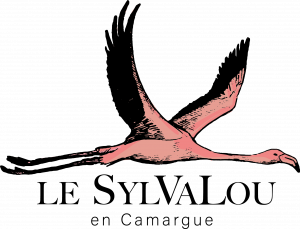THE CAMARGUE
The Camargue is an area classified as a regional park. It lies on the Mediterranean coast, within the Rhône delta, mainly between the two arms of the river.
It covers 3 communes: Arles, Port Saint Louis du Rhône and the whole of Les Saintes-Maries-de-la-Mer, capital of the Camargue.
A small village nestled in the Camargue, a land of hospitality, pilgrimage and tradition. The village of Les Saintes-Maries-de-la-Mer offers a complete change of scenery, with its whitewashed houses and numerous restaurants serving regional specialities.

History & visit : Notre-Dame-de-la-Mer church
IXᵉ century Romanesque fortified church located in the Camargue @villedessaintesmariesdelamer classified as a historical monument since 1840. During your stay in our village, you can not only visit the church, but also climb to its roof! Enjoy a breathtaking view of the village and surrounding area.
“Built near the mouth of the Petit-Rhône, the Church of Saintes Maries de la Mer had an important strategic position, because at the time of its construction, in the 9th and 12th centuries, pirates were rampant on the coast and it was necessary to defend against invasions.
The church dominates the village and can be seen from 10 km inland. It's a veritable fortress, with a single, straight nave, unadorned and 15 metres high. The roof is surrounded by a parapet walk, with battlements and machicolations, and served as a watchtower.

Initially, it served as the Hôtel de Ville and the Prétoire de Justice de Paix. Its facades feature two marble medallions, one representing the coat of arms of France and Navarre, the other the coat of arms of Saintes Maries de la Mer.
These two medallions were sculpted by Pierre SIBRENT, an artist from Lyon who visited the Camargue in the 17th century.
The balcony above the main entrance features three colors:
- The red and white representing Baroncelli
- The flag of Provence (red and yellow)
- La maison d'Anjou (blue with fleur de Lys and lambel)

Camargue racing is a sport in which participants (razeteurs) attempt to remove prize-winning attributes attached to the forehead and horns of a bull called a cocardier or bioù ("ox" in Provençal). This no-kill sporting game is played in the Gard, Hérault and Bouches-Du-Rhône regions, as well as in a few communes in the Vaucluse. The sporting competition is organized into 3 trophies: Trophée des AS, Trophée des Razeteurs and Trophée de l'Avenir.

The Camargue is a small, light-gray horse, renowned and appreciated for its versatility. One of the oldest breeds in the world, it is now protected and raised under specific conditions (the manade system).
It's place of origin and the majority of farms are near the sea and in marshy areas in the south of France (in the Camargue). This has influenced its nickname of "White Horse of the Sea" and helped it acquire robustness and typicality.
The little-known origins of the little white horse of the sea have made it a myth. It's an ancient breed with roots in the marshy lands of the Camargue (southern France), the area from which it takes its name.

The only place in France where you can see pink flamingos is in the Camargue. This bird as elegant as it is astonishing lives in Provence all year round more precisely on the marshy area below Arles, the Parc Naturel Régional de Camargue.
The flamingo lives in a group and moves with the seasons if necessary for its well-being. Apparently, he finds our Camargue to his liking, as he stays all year round. You can also observe pink flamingos in their natural habitat simply by driving through the Camargue region. Indeed, they populate all the marshes and ponds of the Camargue, feeding on small molluscs, crustaceans, insects, larvae and algae contained in the mud.
A visit to the Parc du Pont de Gau is a must in the Camargue. It's the ideal place to see flamingos in large numbers in their natural habitat, and to get up close and personal with the animals. The bird park has been designed with great respect for nature. The landscapes are designed to be attractive to the species found in this region of France.

The Arlésienne costume, along with the Provençal Comtadin costume, is one of the two main variants of Provençal costume.
Also known as arlèse, its wearing was revived by Frédéric Mistral at the end of the 19th century as one of the signs of Provence's cultural identity. Still worn on Sundays until the early 20th century, its common use gradually disappeared during the first half of the 20th century. Nowadays, it is worn only occasionally, by folk groups or during voluntary demonstrations of local identity.

Several times a year, the Church of Les Saintes Maries de la Mer experiences hours of intense fervor on the occasion of the Pilgrimages. Roma, Manouches, Tsiganes and Gitans arrive from the four corners of Europe and even other continents to venerate their saint, Sara la Noire. They set up camp in the streets, squares and seaside resorts. For eight to ten days, this is their home.
The pilgrimage is also an occasion for reunions, and most of the children are baptized in the church of Les Saintes.

The abrivado used to be the driving of bulls from the pastures to the bullring under the supervision of gardians. The bandido was the return of the bulls from the arena to the pastures.
Today, each of these terms refers to a Provençal and Languedoc bullfighting tradition involving the simulated transfer of bulls by releasing them into the closed streets of a town or village.
